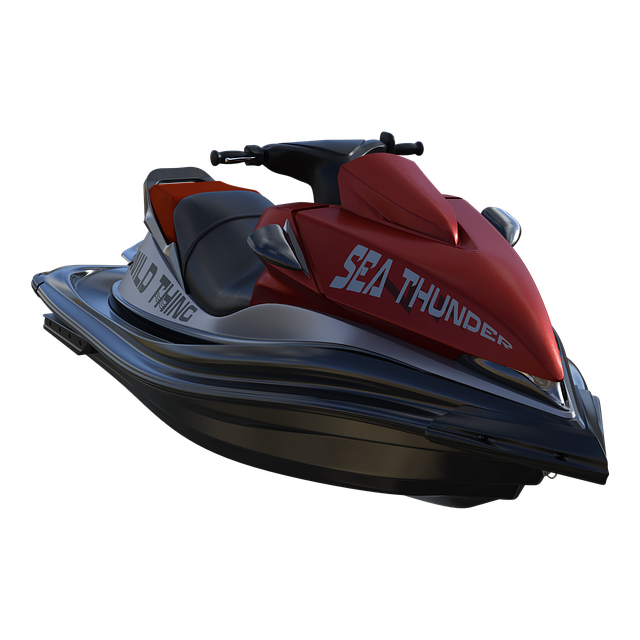Optimize Maritime Power: Must-Have Tools for Boat Battery Setup
A boat battery is essential for the safety, efficiency, and reliability of maritime operations, as it must withstand saltwater corrosion, humidity, and temperature fluctuations. Unlike regular automotive batteries, marine batteries are built for deeper cycling to handle more complete discharges and…….

A boat battery is essential for the safety, efficiency, and reliability of maritime operations, as it must withstand saltwater corrosion, humidity, and temperature fluctuations. Unlike regular automotive batteries, marine batteries are built for deeper cycling to handle more complete discharges and recharges without degradation. When selecting a boat battery, consider the amp-hour rating, reserve capacity, and cold cranking amplitude to match your vessel's power demands. Regular maintenance, understanding your battery's state of charge, and routine inspections will extend its lifespan and ensure it's ready for critical systems and emergencies. High-performance boat batteries should have enhanced capacity, durability, and optimal cold cranking amps (CCA) for efficient engine starting, along with a high reserve capacity (RC) for sustained power. Safety is paramount, so look for construction with impact-resistant, spill-proof cases, and choose from advanced lead technology or alternatives like AGM or gel cell batteries for consistent performance across various temperatures. A comprehensive warranty underscores the manufacturer's trust in the product's reliability. For maintenance, a multimeter is crucial for testing voltage, a hydrometer for measuring electrolyte levels, and marine-specific tools for secure installations, including wrenches, socket sets, cable cutters or crimpers, and stable battery holders. Proper mounting and robust electrical connections are key to optimal performance, while a reliable charge and monitoring system will help maintain the battery's health and provide alerts for any issues. Regular maintenance is vital for ensuring your boat battery functions efficiently during all your maritime endeavors.
When venturing out on the water, a reliable boat battery is your vessel’s lifeline, powering everything from navigation systems to entertainment devices. This article delves into the indispensable tools essential for setting up and maintaining your boat’s battery system effectively. From understanding the critical role these batteries play in maritime operations to selecting the ideal type for your craft, we’ll guide you through key features of high-performance boat batteries and the maintenance equipment required for optimal operation. Additionally, a detailed step-by-step guide will ensure your boat’s battery system is installed with precision and care, enhancing safety and performance on your aquatic endeavors.
- Understanding the Role of a Boat Battery in Maritime Operations
- Key Features to Look for in High-Performance Boat Batteries
- The Importance of Selecting the Right Type of Boat Battery for Your Vessel
- Essential Tools and Equipment for Proper Boat Battery Maintenance and Installation
- Step-by-Step Guide: Setting Up Your Boat's Battery System with Precision and Care
Understanding the Role of a Boat Battery in Maritime Operations

In maritime operations, the reliability and performance of a boat battery are paramount to ensuring smooth and safe sailing experiences. A boat battery serves as the power source for starting the engine and providing essential electrical functions on board. Unlike standard automotive batteries, marine batteries are designed to withstand the corrosive effects of saltwater and the fluctuating temperatures encountered at sea. These specialized batteries are often deeper-cycled than car batteries, meaning they can handle more complete discharges and recharges without compromising their lifespan or performance. When selecting a boat battery, it’s crucial to consider factors such as amp-hour rating, reserve capacity, and cold cranking amplitude to match the specific needs of your vessel and intended usage. Proper maintenance and understanding the state of charge are also essential to prolong the battery’s life and ensure it operates when needed most, such as during an emergency or critical system activation.
The role of a boat battery extends beyond just powering the engine; it is integral to the operation of onboard systems like navigation lights, fish finders, VHF radios, and GPS devices. These systems are vital for the safety and navigational aspects of maritime operations. A reliable boat battery not only enhances the overall functionality of these electronic components but also provides peace of mind that, in an emergency, you have a power source that won’t let you down. Regular inspections and understanding how to maintain optimal charge levels are key practices for boat owners to ensure their batteries perform optimally throughout the boating season and remain ready for use when sailing into the next adventure.
Key Features to Look for in High-Performance Boat Batteries

When selecting high-performance batteries for your vessel, several key features should be at the forefront of your decision-making process to ensure optimal performance and longevity. High-performance boat batteries typically come with enhanced capacity and durability, designed to handle the demanding conditions of marine environments. Look for batteries that offer a high cold cranking amps (CCA) rating, which indicates the battery’s ability to start your engine efficiently in colder temperatures. Additionally, consider the reserve capacity (RC), which measures how many minutes a new battery at full charge can deliver 25 amperes without falling below 1.75 volts per cell. For deep-cycle applications on board, such as trolling or for accessories, batteries with a high marine cranking ampere (MCA) rating are essential, ensuring they can handle multiple discharge/recharge cycles without significant capacity loss.
Furthermore, the design and materials of the battery case are crucial. A robust construction made from impact-resistant materials will protect against the rough seas and vibrations often encountered on a boat. Spill-proof designs with non-conductive, absorbent covers prevent leaks and provide safety. High-performance boat batteries also incorporate advanced lead technology or alternative technologies like AGM (Absorbent Glass Mat) or gel, which offer superior performance, longer life, and maintenance-free operation. These technologies ensure consistent power output and can withstand a wide range of temperatures, making them reliable in various weather conditions. Always opt for batteries that come with a reputable warranty, reflecting the manufacturer’s confidence in their product’s quality and longevity. With these features in mind, you can select a boat battery that will reliably power your marine adventures.
The Importance of Selecting the Right Type of Boat Battery for Your Vessel

When outfitting your vessel with a battery system, the selection of the right type of boat battery is paramount to ensure optimal performance and reliability on the water. Boat batteries are specifically designed to withstand the harsh marine environment, which often includes exposure to saltwater, humidity, and varying temperatures. Unlike standard automotive batteries, marine batteries are engineered with robust construction and non-spillable design to meet the unique needs of boating applications.
For starters, there are primarily two types of boat batteries: starting (cranking) and deep-cycle batteries. Starting batteries are designed to deliver short bursts of high current to start the engine, while deep-cycle batteries are built for cyclic use, such as powering trolling motors or electronics over extended periods. Depending on your vessel’s configuration and intended use, you may need one type, both, or even a combination of different battery technologies like AGM (Absorbent Glass Mat), gel cell, or lithium-ion batteries. It’s crucial to consider the amp-hour rating and the reserve capacity to match the battery’s capacity with your boat’s electrical demands. Properly selected boat batteries will not only enhance the safety and functionality of your vessel but also extend its lifespan and provide uninterrupted power when you need it most, ensuring a seamless experience on the water.
Essential Tools and Equipment for Proper Boat Battery Maintenance and Installation

When maintaining or installing a boat battery, having the right tools and equipment is paramount to ensure both safety and longevity of the battery. A multimeter is an indispensable tool for testing a boat battery’s voltage and ensuring it holds a charge properly. It allows you to measure the battery’s performance under various loads, which is crucial for diagnosing issues related to capacity or charging efficiency. Additionally, a hydrometer is essential for checking the electrolyte levels and specific gravity of each cell in lead-acid batteries, providing insights into the state of charge and health of the battery.
For installation, a reliable set of wrenches and socket sets tailored for marine applications should be part of your arsenal. These tools are designed to withstand the harsh marine environment while offering the precision needed to connect the battery terminals correctly. Moreover, cable cutters or crimpers are necessary for cutting and joining battery cables securely. Ensure that you also have a reliable battery holder or tray to support the battery in place and prevent movement that could damage the terminals or casing. Proper mounting and connection will protect your investment in the battery, ensuring it functions at its best while afloat.
Step-by-Step Guide: Setting Up Your Boat's Battery System with Precision and Care

When configuring your boat’s battery system, precision and care are paramount to ensure optimal performance and longevity. The initial step involves selecting the appropriate batteries for your vessel’s power requirements. Boat batteries, specifically designed for marine use with deep-cycle capabilities, are essential for providing the reliable energy needed for starting, as well as for deep discharge applications like trolling or running electronic equipment.
Once the right batteries are procured, installation is a meticulous process that demands attention to detail. Begin by securely mounting the batteries in their designated compartment, ensuring they are installed on level surfaces to prevent any acid from migrating and damaging the cells. Connect the batteries in series or parallel, as needed, to achieve the desired voltage and amperage. Utilize quality battery cables and terminals to establish strong, conductive connections, and secure them with the appropriate hardware to prevent looseness or corrosion over time. After the physical setup, the next crucial step is to set up a charge and monitoring system. This system should be capable of maintaining the batteries at an optimal state of charge, providing protection against overcharging, and alerting you to any irregularities. Regular maintenance, including checking electrolyte levels, cleaning terminals, and topping off water if necessary, will further ensure your boat’s battery system operates at peak efficiency throughout your voyages.
When it comes to ensuring your maritime adventures are powered by reliability, the right tools for battery setup are indispensable. As detailed throughout this article, understanding the pivotal role a boat battery plays in maritime operations is just the beginning. Selecting a high-performance boat battery tailored to your vessel’s specific needs and mastering the maintenance and installation processes are crucial steps to guarantee seamless operation and longevity. With the comprehensive guide provided, you’re now equipped with the knowledge to set up your boat’s battery system accurately and meticulously. Remember, the health of your vessel’s power supply directly impacts safety and performance on the water; thus, investing in the appropriate tools and adhering to best practices for maintenance and installation are key to a successful boating experience.







